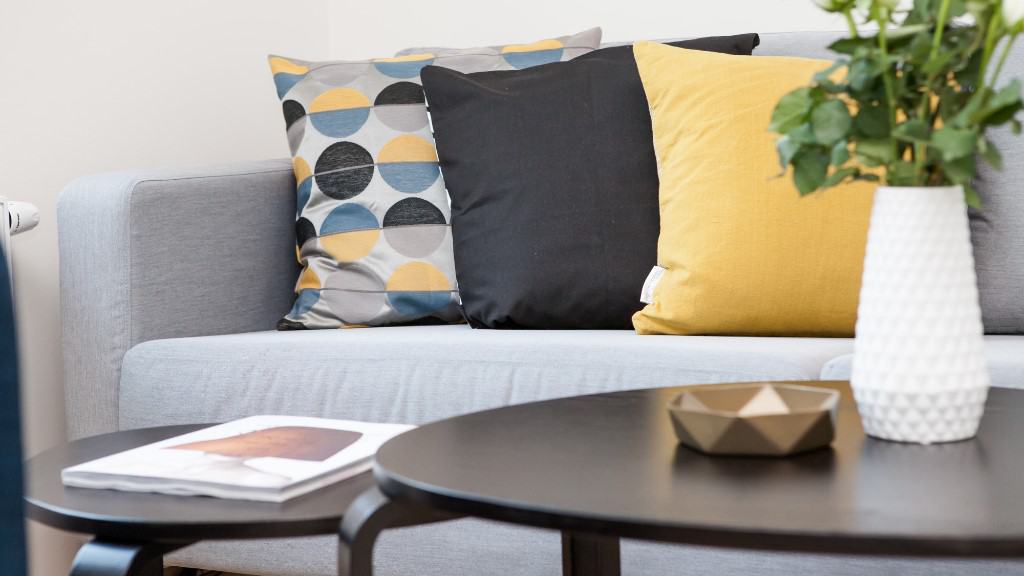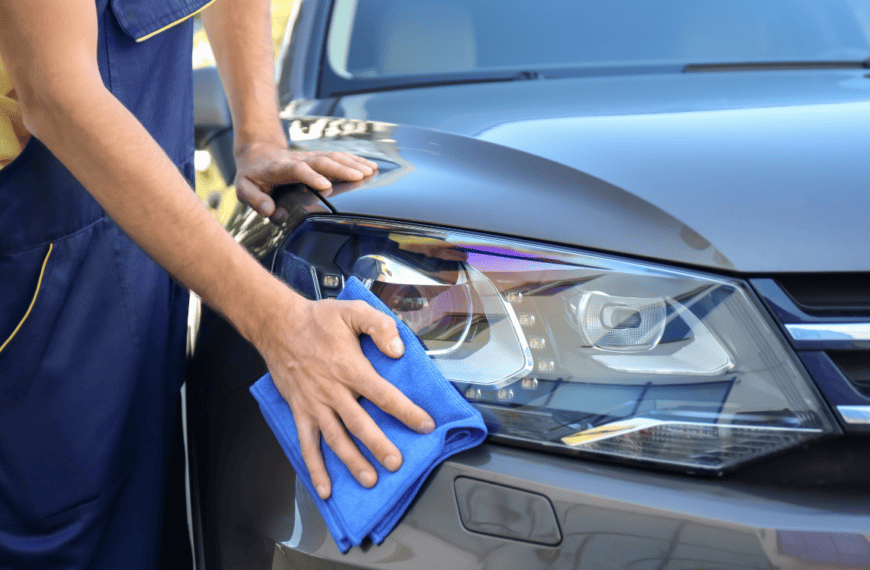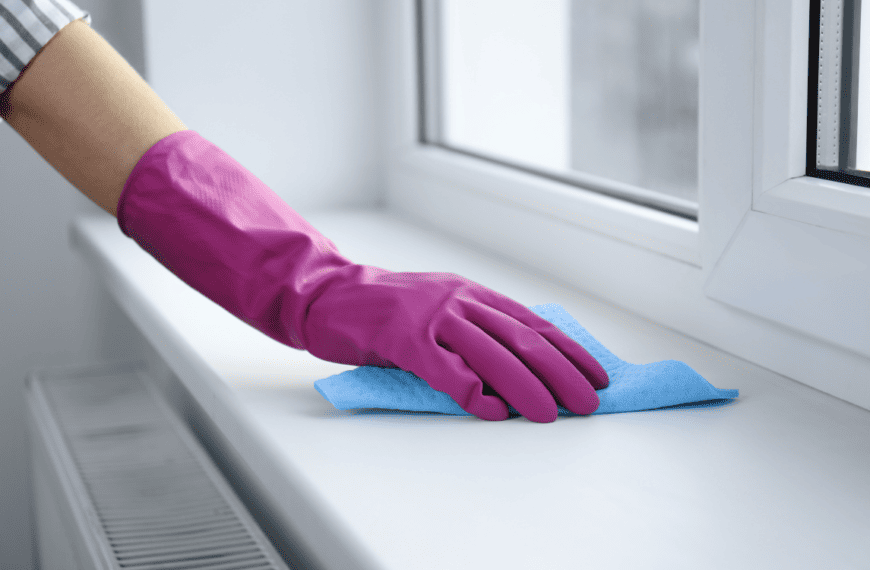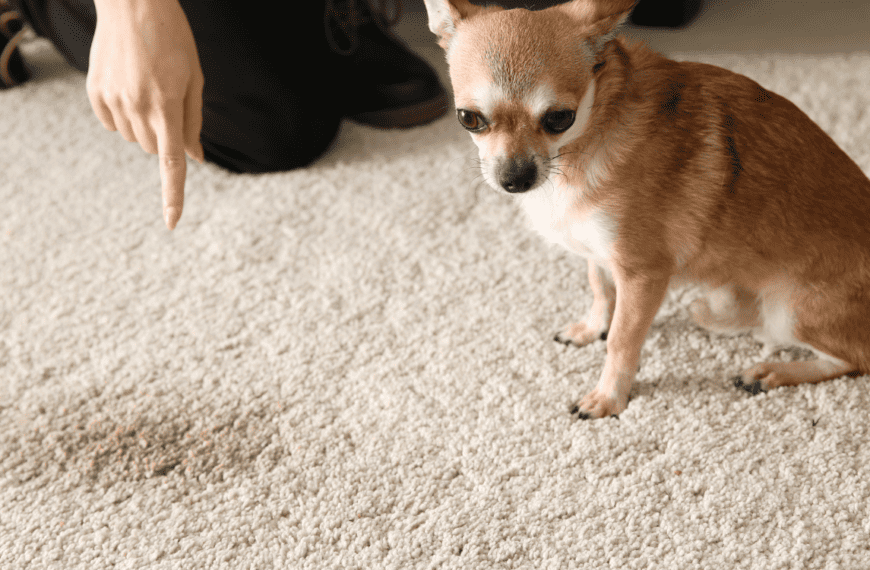The living room couch certainly gets a lot of attention when we earn a little downtime during the day. When work is over and the chores are done, studies show that most of us move straight to the sofa for a few hours of TV and relaxation.
That ought to offer some relief if you feel like you’ve been turning into a real couch potato as of late, but it should also give you pause to consider your sofa cleaning habits. When you and your family spend that much time hanging out on your couch, it’s bound to pick up debris, stains, and a few funky odors.
If you can’t remember the last time you deep cleaned your couch, it’s overdue. Revitalize your family space and restore the look and feel of your sofa with this detailed guide on how to deep clean a couch cushion.
Check the Material Before You Clean
While most couch materials can handle light brushing or vacuuming, they can’t all hold up under the same cleaning solution. Before attempting any cleaning method on your sofa, consult the manufacturer’s instructions on the attached care tag.
If your couch has removable cushions, you can usually find the care tag on the sofa platform under one of the cushions. A sofa with non-removable cushions may have the label on the bottom of the sofa, while a reclining couch will keep it on the underside of one of the reclined footrests.
Furniture Cleaning Codes
After locating the tag, you’ll notice a cleaning code for the couch fabric indicating the appropriate cleaning solution. Cleaning codes include:
- W: Accepts water-based cleaners
- S: Accepts solvent-based cleaners (dry clean only)
- W/S: Accepts both water-based and solvent-based solutions
- X: Only brushing and vacuuming are allowed
Code “W” fabrics are the easiest to clean, allowing you to use upholstery shampoos, foams, and even steam cleaning in some cases for an efficient and effective refresh. Synthetic fabrics common to many mass-produced furniture pieces, like polyester or nylon, often have a “W” or “W/S” code.
Code “S” furniture indicates it only allows for dry cleaning solvents. Natural materials, such as wool or silk, are more likely to have an “S” code. If you treat them with water, these materials can develop water stains, shrink, or warp, leaving them irreversibly damaged. On the other hand, the harsh ingredients in dry cleaning solvents that dissolve stains can also damage a “W” code fabric.
If you are unsure how to clean your couch or can’t find the tag, contact the manufacturer for information on the proper cleaning process. You can also work with a local expert for insights and assistance in safely cleaning the couch.
Handy Tools for Easy Couch Cleaning
After finding the cleaning code for your furniture, you can develop a cleaning plan. As you look for the best way to freshen your couch, keep these helpful tools in mind for building an efficient arsenal:
- Clean, white cloths: Help you see that wet stains are coming up while preventing dirt and dye transfer that can ruin the fabric
- Lint roller: Helpful for cleaning up pet hair on any furniture material
- Handheld vacuum: For convenient couch cleanups
- Steam cleaner: Uses high-pressure steam to penetrate upholstered furniture, lift dirt, and remove stains
- Crevice and upholstery tools: Vacuum cleaner attachments for digging into cracks and gaps in sofa cushions and loosening dirt in the fabric
- Upholstery cleaner: Fabric cleaner that uses a detergent solution, scrubbing brush attachment, and suction to loosen, lift, and remove tough stains
- Handheld steamer: A convenient way to sanitize couch surfaces and lift stains
- Baby wipes: Easy-to-use wipes for picking up minor stains on various couch materials
How to Clean a Fabric Couch
A “W” or “W/S” code material is typically the easiest to clean, but you still need to follow a few crucial rules to prevent damage while cleaning a fabric sofa.
The most vital component of cleaning a couch is attending to spills immediately. Blotting and soaking up as much moisture as possible before a stain can sink into the fabric will make any cleaning effort exponentially easier.
Spot-testing your cleaning solution is also essential. Even if your cleaning product states that it will work with your material, a spot test in an inconspicuous area will save you from the frustration of an unexpected and irremovable stain on your couch’s fabric. Apply a small amount of cleaner to a spot on the back of the sofa or a piece of fabric under a cushion where nobody will see it. Let it dry to ensure it won’t leave a lasting mark.
With those initial considerations handled, let’s explore the best deep-cleaning method for a fabric couch.
1. Brush and Vacuum
Use a stiff brush and vacuum cleaner to remove any loose dirt and debris from your couch cushions before trying a cleaning solution. Push the brush against the fabric to dislodge dirt, taking care not to add too much abrasive action to avoid damaging the fibers. Attach the upholstery brush or crevice tool to reach as much hidden material as possible.
If you don’t have a vacuum, you can also take removable cushions outside to beat out the dirt. Standing upwind from the cushion, hit it several times with your hand to release large debris, turning and flipping it frequently as you work. Removing as much filth as possible is crucial before applying a liquid cleaner, as water can mix with loose dirt to create new stains.
2. Sprinkle Baking Soda
Baking soda is a safe choice for a deep clean, whether you’re trying to remove pet pee or simply deodorizing a generally smelly couch. Sprinkle baking soda over the entire couch, and let it sit for at least 20–30 minutes. As it rests, the powder will absorb lingering moisture, lift and remove liquid stains, and neutralize foul odors coming from the cushions. When the time is up, vacuum the baking soda, using the brush attachment to lift embedded flecks.
3. Use a White Vinegar All-Purpose Cleaner
When battling stubborn stains on a fabric couch, a natural all-purpose vinegar spray is often the most convenient, safe, and effective cleaning solution. Mix warm water and distilled white vinegar in a 10:1 ratio in a spray bottle. Add a few drops of mild dish detergent as desired for a grease-busting boost.
After testing the cleaner in an out-of-the-way spot, lightly spray the entire sofa. Gently blot the cushions with a dry microfiber cloth. Use your cleaning brush as you go to lift any remaining surface dirt.
Let the couch air dry for a few hours after cleaning. Turn on your ceiling fan, open the windows, or set up a box fan to speed up the dry time.
4. Clean Couch Cushions with Detergent
If you don’t enjoy the smell of vinegar, you can opt for an even more straightforward cleaning solution of only warm water mixed with mild dish soap or liquid detergent. Combine one cup of warm water with about ½ teaspoon of dish soap in a spray bottle. Spray the sofa, blot it gently with a clean cloth, and let it air dry. For particularly wet spots, use a hair dryer to remove excess moisture.
Check the couch care instructions to see if the cushion covers are washable. Tossing a removable cushion cover in the washing machine will deliver a deeper clean, but it can also damage fragile fabrics. If your sofa allows, wash the cushions on the gentlest cycle possible, and let them air dry or tumble dry on a low setting. Put the covers back over the cushion cores before they are completely dry to let them dry into the proper shape.
5. Use an Enzyme Cleaner for Pet Stains
With pets in the house, it often takes more than the everyday DIY cleaner to eliminate tough stains and powerful aromas. After a pet accident on the sofa, skip straight to an enzyme cleaner for spot cleaning.
Enzymatic cleaners use targeted bacteria and enzymes to break down and lift soil from urine and vomit, removing foul cat odors and dog smells for good. Though instructions vary slightly between products, most cleaners come as a spray for easy application to the stain. After letting them sit for about 5–10 minutes, you can blot the cleaner with a clean, damp cloth.
6. Try a Steam Cleaner or Upholstery Cleaner
When all else fails, stained fabric couches may be able to tolerate more aggressive solutions, namely steam cleaning or shampooing. Before attempting these cleaning methods on stained areas or the entire couch, carefully read the manufacturer’s instructions and spot test on a hidden section, as they can just as easily cause damage to your sofa with improper use.
How to Clean Solvent-Only Sofa Cushions
An “S” code sofa material may stain or warp from standard fabric cleaners, but you still have two practical options — rubbing alcohol and dry cleaning solvents. Before applying your cleaning solution, give your sofa a thorough vacuuming to remove dirt, crumbs, dust, and other debris.
1. Spray a Rubbing Alcohol Cleaner
Isopropyl alcohol is likely the most accessible solution for handling a deep clean on your natural fiber sofa. As with any cleaning solution, spot-test rubbing alcohol on your couch fabric before trying to remove stains or deep clean the sofa.
Add rubbing alcohol and water to a spray bottle in a 2:1 ratio and lightly spritz the sofa. Dab the cushions lightly with a clean, damp cloth, and let the sofa air dry. Rubbing alcohol is an excellent initial cleaning solution because it’s safe on most “W” and “S” code furniture and less hazardous than a dry-cleaning solution. Plus, it disinfects as it cleans.
2. Use a Dry Cleaning Solvent
Dry cleaning solutions use water-free chemicals to loosen and dissolve soils and stains. Many products contain hazardous substances, so wearing protective gloves and face coverings in a well-ventilated environment is crucial. Follow the product instructions and reference the sofa care label to prevent damage and discoloration.
How to Clean Microfiber Cloth Cushions
Microfiber isn’t a type of material but refers to the tiny synthetic fibers that make it less susceptible to picking, pilling, and staining. Most microfiber couches use the materials you’d find in many cloth sofas, such as polyester, and you can often employ the same cleaning process as you would with any other “W” code sofa.
Because microfiber can take on brushed or unbrushed textures to mimic suede, velvet, leather, and other materials, always reference the care tag to ensure you’re applying the proper cleaning solution. Brush and vacuum the sofa first, and spot-test any DIY or consumer cleaning product before attempting a deep clean.
How to Clean Leather Couch Cushions
Protected leather couches feature a smooth finish that makes cleaning a breeze. Like microfiber, liquids sit on top of the material, making them easy to sop up.
Vacuuming your leather sofa, and gently wipe it with a microfiber cloth to remove dirt and dust. For minor stains, which usually appear as lifted marks on top of the sofa material, use a damp cloth to buff them out.
Although leather is easy to clean, it may need regular upkeep to prevent it from cracking. Sunlight and heat exposure can dry leather out over time, causing it to shrink and split. Depending on how it sits in the room, you might have to apply a leather conditioner every 6–12 months.
How to Clean a Suede Couch
Cleaning a soft, suede couch isn’t the same as refreshing a more durable leather sofa. Take a gentle approach to protect the lustrous material by blotting the surface with a damp microfiber cloth to lift dirt and dust. Use a brush or eraser to remove stains, or buy a suede and nubuck cleaning product to spray on the sofa. The crucial consideration is keeping the material from getting too wet, which can cause immediate damage.
Find Deep Cleaning Help
Knowing how to clean your couch safely and effectively is only half the battle. If you still can’t find the time to work a routine cleaning into your hectic daily schedule, let Anita’s manage the burden for you.
In only a few hassle-free steps, we’ll connect you with local cleaning experts to take over any cleaning chore, from the couch to the kitchen and beyond. Request a booking today to learn how we can help you keep a cleaner home and lead a more stress-free life!









